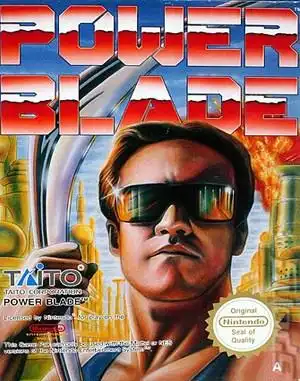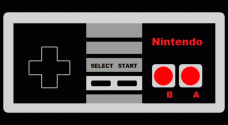Remember the thrill of renting a new NES game based purely on the box art or a tiny screenshot in Nintendo Power? Sometimes you struck gold, sometimes... well, let's just say the '80s and '90s had some interesting localization choices. But buried amidst the bizarre name changes and baffling plot alterations, there were a few instances where the Western release actually improved on the original. Today, we're talking about one such potential success story: Power Blade NES.
Forget what you might know about its Japanese sibling, Power Blazer. The version that landed on North American shores in 1991 courtesy of Taito was a different beast entirely. It wasn't just a translation; it was a significant rework that transformed a somewhat clunky action game into a bonafide, must-play NES classic.
From Blazer to Blade: The Transformation
The original Japanese game, Power Blazer, had its heart in the right place. It was an action platformer clearly taking cues from the Mega Man series, featuring non-linear stage selection and a sci-fi setting. You played as a dude with a boomerang trying to save the world. Sounds cool, right?
Well, the execution was... a little rough. Critics and players pointed out loose controls, frustrating difficulty spikes, and a boomerang that felt less like a versatile weapon and more like a suggestion to enemies. Taito saw this and, instead of just slapping an English title on it, decided to make some serious changes for the international release.
What Made Power Blade Shine?
The NES version, Power Blade, kept the core premise – infiltrate alien-controlled sectors to destroy the Master Computer as Chief Security Officer Nova – but fundamentally altered the gameplay experience.
Here's where Power Blade became the game we remember fondly:
- Tighter Controls: Nova felt far more responsive and agile. Jumping, running, and attacking just worked better.
- The Mighty Boomerang: This was arguably the biggest upgrade. The boomerang in Power Blade was a powerhouse. It flew out, damaged enemies, and damaged them again on the return trip. You could even control its trajectory somewhat and attack in multiple directions, making it an incredibly versatile tool for clearing rooms and dealing with tricky foes.
- The Power Suit: This temporary power-up turned Nova into a tank, granting increased defense and a powerful energy blast. Finding one felt like hitting the jackpot and could make tough sections significantly easier.
- Improved Level Design: While still featuring non-linear stage selection like its predecessor and Mega Man, Power Blade's levels felt larger and more exploratory. You often had multiple paths and the added objective of finding an agent to get an ID card before facing the boss encouraged you to really explore every corner.
- Faster Power Meter: Charging up your special attack felt quicker and less tedious.
These changes weren't just tweaks; they were a complete overhaul that addressed the core complaints about Power Blazer.
Gameplay and Difficulty
At its core, Power Blade is a fast-paced action platformer. You'll run, jump, climb, and boomerang your way through six distinct sectors, each culminating in a boss fight. The variety in environments, from futuristic labs to icy caverns, keeps things visually interesting.
The difficulty level is a point of discussion. Compared to the brutal Power Blazer, Power Blade is considerably easier. Power suits are relatively common, health pick-ups (delicious hamburgers!) are frequent, and the overpowered boomerang lets you cheese many encounters. While some bosses can still pose a challenge, the game generally falls on the more accessible side of the NES action library. This shift made it less frustrating and arguably more fun for a wider audience.
Why Power Blade is Still Worth Playing
In an era dominated by Mega Man, Contra, and Ninja Gaiden, Power Blade carved out its own niche. It offered solid action, satisfying exploration, and a weapon that felt genuinely powerful and unique. It's a prime example of a localization effort gone right, transforming a mediocre Japanese title into a genuinely good, even great, NES game.
If you're a retro gamer looking for a hidden gem you might have missed, or simply want to experience an action platformer that feels a little different from the usual suspects, fire up an emulator or track down the cartridge. Power Blade NES is a nostalgic trip worth taking.
Power Blade NES FAQ
Q: Is Power Blade related to Mega Man? A: While Power Blade shares some similarities like non-linear stage selection and a sci-fi theme, it's not officially related to the Mega Man series. Its Japanese predecessor, Power Blazer, was more heavily influenced by Mega Man, but Power Blade developed its own identity.
Q: How is Power Blade different from Power Blazer? A: Power Blade is a significantly revised version of the Japanese game Power Blazer. Key differences include tighter controls, a vastly improved boomerang weapon, the addition of a power suit, larger levels with more exploration, and a lower overall difficulty.
Q: Who published Power Blade on NES? A: Power Blade was published by Taito America Corp. in North America.
Q: Can I still play Power Blade today? A: Yes, Power Blade NES can be played on original NES hardware, through emulation on various devices (like PCs via DOSBox or similar emulators), or potentially on retro compilation releases if available. Always seek legal means to play classic games.


